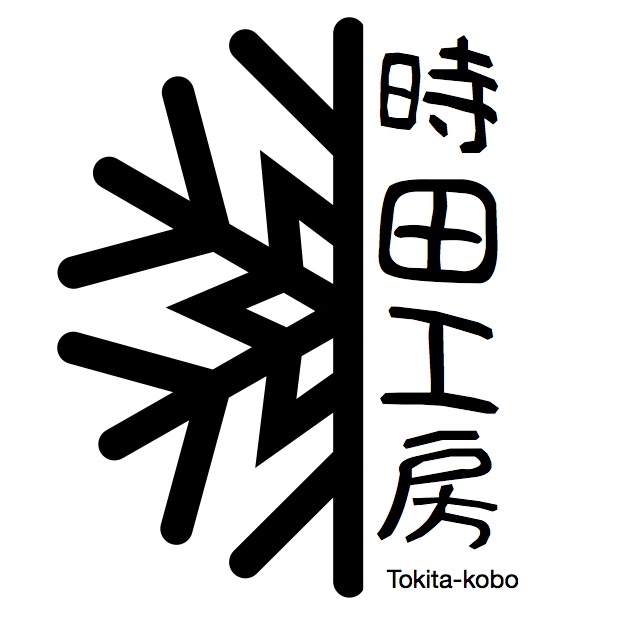Japanese summers are beautiful—but also hot, humid, and intense. Especially in July and August, temperatures often soar above 35°C, with high humidity that makes it feel even hotter (Feels like about 40°C). Also, in this summer we hit 41.8℃ in Gunma Prefecture! It keeps warm until November! (I was surprised that I got some mosquito bites in November). Whether you’re traveling in Japan or attending a summer festival in Toronto, learning how the Japanese cope with the heat can help you stay cool, comfortable, and safe.
At Tokita Kobo, we not only upcycle kimono into beautiful accessories, but we also take inspiration from Japanese seasonal living—including smart ways to beat the summer heat.
Traditional and Modern Ways to Stay Cool in Japan
1. Handy Fans – Personal Breeze On-the-Go

Small portable electric fans, known as keitai senpūki(携帯扇風機), are a summer essential in Japan. Worn around the neck or held in your hand, they give you instant airflow during long walks, train waits, or outdoor festivals. You’ll see people of all ages—especially students and commuters—using these everywhere in the summer.
2. Sun Umbrellas (日傘) – Stylish Sun Protection

Unlike in Western countries where umbrellas are mostly for rain, Japanese people regularly use parasols in summer. Called higasa, these umbrellas are made with UV protection and come in beautiful designs. Using a parasol not only shades your skin from the sun but also makes you feel significantly cooler. It’s a chic and practical way to enjoy a summer walk.
3. Neck Cooler – Simple but Effective

Sold in convenience stores and outdoor shops, Neck coolers are soft towels you wet, wring, and snap before wrapping them around your neck. The fabric is made to stay cool for long periods, and it’s great for active days. In Japan, many kids take these to school during heatwaves, and vendors use them while setting up booths.
4. Uchiwa and Sensu Fans (団扇・扇子)

Even before electric fans, Japan had beautiful handheld paper fans—uchiwa (flat fans) and sensu (folding fans). These are often decorated with seasonal motifs like fireworks or goldfish, and you’ll receive them as free promotional gifts in summer. They’re eco-friendly, reusable, and a traditional favorite during summer matsuri (festivals).
You’ll even find modern versions of these fans made from upcycled kimono fabric, combining culture and sustainability—just like our work at Tokita Kobo.
5. Hats and Lightweight Clothing

Wide-brimmed hats and breathable, natural-fiber clothing (like cotton or linen) are staples of Japanese summer fashion. Jinbei (甚平) and yukata are traditional summer garments made of lightweight cotton, worn at festivals and at home for comfort.
If you’re wearing something handmade from kimono fabric, like our upcycled headbands or scrunchies, it’s good to match it with summer-friendly clothing to stay stylish and cool.
6. Cold Drinks & Kakigōri (かき氷)

Convenience stores and vending machines across Japan are stocked with iced drinks, sports beverages, and cold tea. Many people carry insulated water bottles, and it’s common to take salt tablets or electrolyte drinks during heatwaves.
You’ll also find kakigōri, or shaved ice topped with fruit syrup, at summer festivals—one of the most refreshing treats in the heat.
🧊 Stay Cool & Mindful Wherever You Are
The Japanese approach to handling extreme heat is both practical and thoughtful—focused on personal comfort, elegance, and respect for the season. At Tokita Kobo, we take these same values to heart, even here in Toronto:
- We bring fans, cold water, and shaded coverings to our outdoor market booths.
- We stay hydrated and take breaks to avoid overheating.
- We use lightweight kimono fabric for our accessories to make them summer-friendly and breathable.
💡 Quick Tips for Handling Summer Heat (Japan or Anywhere!)
- Carry a portable fan or folding fan
- Use a sun umbrella or wear a hat
- Wear loose, breathable clothing
- Use a cooling towel or neck wrap
- Keep a reusable water bottle with you
- Take breaks in the shade or AC
- Enjoy cold treats—but don’t forget electrolytes!
Whether you’re exploring Japan or walking through a sunny artisan market in Canada, embracing small seasonal habits can keep you comfortable and connected to tradition.

